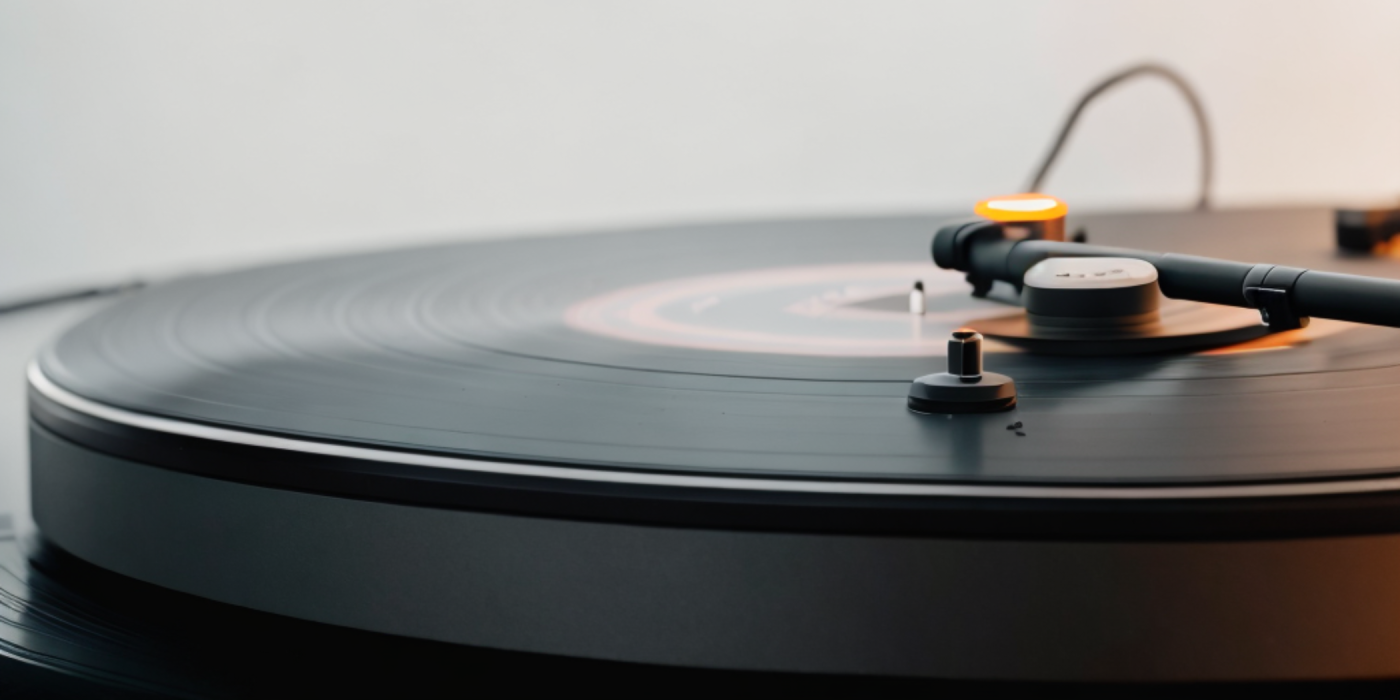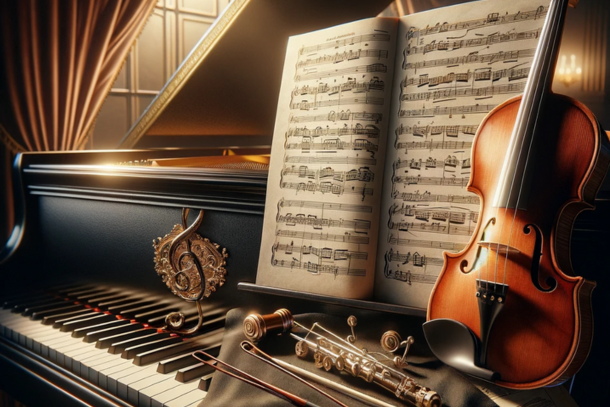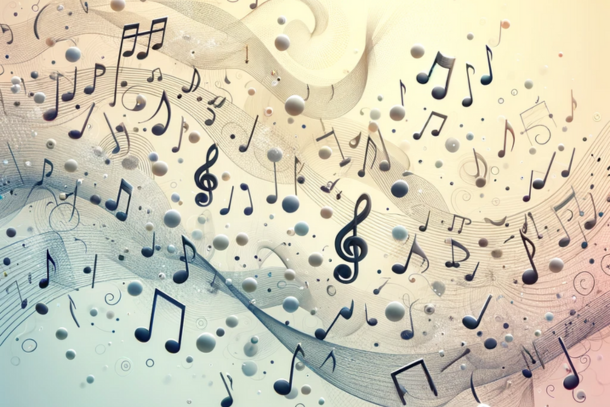The Evolution of Music: An Exciting Journey from Vinyl to Streaming

The artistry and technological advancements in the world of music have always moved in tandem. Music, as a medium of expression and connection, has evolved spectacularly over the years, shaped significantly by the modes of its recording and consumption. This transformation has navigated from the resonating grooves of vinyl records to the intangible realms of digital music and streaming services, marking a fascinating journey that is both a testament to human creativity and technological innovation.
A Brief History of Music Recording and Consumption
The Early Beginnings
The story of music recording began in the late 19th century with Thomas Edison's phonograph, which could both record and reproduce sound. But it wasn't until the introduction of vinyl records in the mid-20th century that music became more accessible and home-oriented, with people listening to and collecting their favourite albums.
The Advent of New Formats
As time progressed, newer, more convenient formats such as cassette tapes and Compact Discs (CDs) became popular. The sound quality and portability improved, shifting the trends of music consumption. These physical formats, however, were soon to face a digital onslaught.
The Digital Age
The advent of the internet changed the game entirely. Digital music formats such as MP3 allowed music to be stored, shared, and downloaded in ways never seen before. As the 21st century dawned, music went mobile with devices such as Apple's iPod.
The Streaming Era
Today, we are in the era of music streaming, dominated by platforms such as Spotify and Apple Music. Music is now a service we subscribe to, with vast libraries available at our fingertips.
As we delve into the nuances of this remarkable evolution of music, we hope to paint a vivid picture of how music consumption has changed and what these shifts mean for artists, the music industry, and us, the listeners.
The Era of Vinyl Records
Origin and Development of Vinyl Records
The history of vinyl records begins in the late 19th century with the advent of phonographs. However, it wasn't until the 1940s that the familiar 33 1/3 rpm long-playing (LP) vinyl record we know today was introduced by Columbia Records. These LPs, with their superior sound quality and longer playing time, represented a significant evolution in music technology.
Vinyl’s Influence on the Music Industry and Culture
The vinyl era was characterised by the emergence of album-oriented culture, a shift from the single-focused market of earlier years. The larger format of the LP allowed musicians to craft and curate longer, more cohesive works, leading to a golden era of concept albums and creative experimentation.
Vinyl also played a crucial role in youth culture and counter-culture movements. Album cover art became a form of artistic expression, with iconic covers like The Beatles' "Sgt. Pepper's Lonely Hearts Club Band" becoming cultural touchstones.
Major Artists and Music Trends During the Vinyl Era
The vinyl era was graced by the emergence of many musical legends, from The Beatles and Rolling Stones to David Bowie and Pink Floyd. It was a time of rapid genre evolution, with rock and roll, psychedelic rock, and punk all flourishing.
Meanwhile, reggae and ska were taking off in the UK, with artists like The Specials and Bob Marley gaining a passionate following.
This period was a time of rich sonic exploration, the echoes of which are still felt in contemporary music. The history of vinyl records is indeed a vibrant chapter in the evolution of music.
Transition from Vinyl to Tapes and CDs
Introduction of Tapes and CDs in the Music Industry
In the midst of the flourishing vinyl era, a new innovation quietly began to take shape. Cassette tapes, first introduced in the early 1960s, became increasingly popular due to their compact size and ease of use. This was followed by the advent of the compact disc, or CD, in the early 1980s. As a revolutionary development, CDs offered a digital medium of audio playback which seemed miles ahead of the analogue tapes and vinyl records.
Technical Improvements: Sound Quality, Portability, and Accessibility
One cannot overlook the pivotal technical advancements these new formats brought about. The sound quality significantly improved as both cassette tapes and CDs reduced noise interference, a constant issue with vinyl. Moreover, their smaller sizes enabled easy portability, introducing music into cars, walkmans, and portable CD players. The storage capacity of CDs also ushered in an era where an album could play continuously without the need to flip sides, as was required with vinyl.
Impact on the Music Market and Consumer Behaviour
This transition had a profound impact on the music market and consumer behaviour. The ease and convenience of tapes and CDs led to a boom in sales, gradually outperforming vinyl records. Listeners now had a broader choice of music to buy and a more convenient way to listen. It wasn't long before CDs became the dominant format for music distribution. They were easier to produce, ship, and store, and they offered a more durable option for consumers.
Keyphrase: "Transition from Vinyl to CDs"
In essence, the "Transition from vinyl to CDs" represents a significant milestone in the evolution of music. It marked the move towards more convenient and accessible formats for music consumption, a trend that continues to this day.
The Digital Revolution: MP3 and Digital Downloads
The Advent of the Internet and the Dawn of the Digital Music Era
The late 20th century heralded an era of unprecedented change with the advent of the internet, drastically shifting the landscape of many industries, not least the music industry. The new era signified a move away from the physical to the digital, paving the way for MP3 and other digital formats.
The Birth and Rapid Ascendancy of MP3 and Digital Downloads
In the 1990s, MP3, a digital audio coding format, sprouted and swiftly rose to dominance. The MP3 format enabled compression of music files without a significant perceivable loss in quality, making it feasible to download full tracks in a matter of minutes - a truly revolutionary concept. The birth of the iPod in 2001 only fuelled this trend, placing a premium on the compact, portable, and readily accessible nature of digital music.
Piracy and the Changing Landscape of the Music Industry
The digital music revolution, however, was a double-edged sword. As digital downloads soared, so did music piracy. Peer-to-peer file sharing services like Napster emerged, allowing users to easily share copyrighted music for free. This had profound repercussions for the music industry, creating a crisis around copyright infringement and artist compensation.
While measures were taken to curtail piracy, it catalysed a paradigm shift in how music was distributed and monetised. The industry began to rethink its traditional models, paving the way for the music streaming era we live in today.
As we look back, the transition from physical to digital formats was a turning point, shaping the future of the music industry. This era, marked by the rise of MP3 and digital downloads, set the stage for the next significant development in our musical journey - the advent of music streaming services.
Music Goes Mobile: iPods and Other Portable Devices
Introduction and Impact of Apple's iPod
Launched in 2001, Apple's iPod revolutionised the way we consume music. This sleek, pocket-sized device could store an entire music library, offering listeners an unparalleled level of portability. The slogan "1000 songs in your pocket" perfectly encapsulated the vast potential of this ground-breaking technology. The iPod swiftly became a cultural icon, changing not only our music listening habits but also the way we viewed personal technology.
Other Significant Portable Music Devices
While the iPod was a dominant force, it wasn't the only device that contributed to the shift towards mobile music. Various MP3 players also vied for consumer attention, including products from brands like Sony, Creative, and Samsung. Each offered unique features, such as voice recording or FM radio capabilities, providing a variety of options for the discerning music lover.
Shift in Music Consumption Patterns
This era marked a pivotal shift in music consumption. With digital music now at our fingertips, listening became a much more personal, portable experience. Rather than being confined to a living room stereo or car radio, music could accompany us on commutes, at the gym, or on a leisurely stroll. This transformation further accelerated the shift towards playlists and shuffle modes, replacing the traditional album format. It paved the way for personalised music experiences, fuelling our 'on-demand' expectations.
The evolution of music has always been intrinsically linked with technology, and as we moved into the age of mobile devices, the key phrase truly became, "Music on the go."
Streaming Services Take Over: Spotify, Apple Music, and More
Emergence of Music Streaming Platforms
The advent of the internet not only democratised information but also catalysed a profound shift in music consumption. In the mid-2000s, a new trend began to emerge: streaming. Platforms like Spotify, which launched in Sweden in 2008 and later rolled out to the UK in 2009, allowed listeners to access a vast library of music without needing to own each individual track or album. Following closely behind, Apple Music entered the scene in 2015, giving the streaming landscape another major player.
Features and Offerings: Large Libraries, Personalised Recommendations, Playlists
Streaming services offered a tantalising proposition for music fans: virtually unlimited access to music, anytime, anywhere. Spotify, Apple Music, and their contemporaries boasted large libraries, with millions of tracks spanning across a multitude of genres. Moreover, they utilised complex algorithms to provide personalised recommendations, thereby helping listeners discover new artists and tracks based on their unique tastes. Playlists became a central feature of the streaming experience, with listeners able to create their own or enjoy those curated by others.
Effect on Artists, Record Labels, and Listeners
For artists and record labels, streaming services offered a mixed blessing. On one hand, they provided an unprecedented platform for music distribution, enabling artists to reach a global audience with ease. However, they also sparked controversy regarding royalties and the value of music in the digital age. For listeners, while the convenience and accessibility were unparalleled, some argued that the intimate connection once experienced through owning a physical record was lost.
From this significant shift, "music streaming services" have become a defining characteristic of the modern music industry, fundamentally changing the way we create, distribute, and consume music.
Current Trends and Future of Music Streaming
In this swiftly advancing digital age, music streaming is constantly evolving, presenting several modern trends that are transforming our listening experiences.
High-Resolution Audio
The pursuit for superior sound quality has given birth to the trend of high-resolution audio in streaming services. Platforms like Tidal and Amazon Music HD now offer lossless audio, a feature that preserves the intricate details of music, replicating the depth and breadth of sounds as intended by the artists. This trend signifies a return to the quest for high-quality sound, akin to the allure of vinyl in its heyday.
Virtual Concerts
In the wake of social distancing measures and lockdowns, the music industry turned to virtual concerts to keep the rhythm alive. This trend has blossomed into a mainstay, with artists reaching global audiences from their living rooms or specially curated digital stages. The accessibility and comfort of enjoying live music from home are contributing to the popularity of this format, and it's poised to grow even after pandemic restrictions lift.
AI-Generated Music
The integration of artificial intelligence (AI) into music creation and curation is another significant trend. AI is being used to create background scores, assist in songwriting, and even generate personalised playlists for listeners. This technology's potential in the music industry is vast and largely unexplored, offering exciting opportunities for innovation.
As we look ahead, the future of music consumption will likely continue to be dominated by streaming services, with the incorporation of more immersive experiences like virtual reality concerts and augmented reality album covers. Enhanced personalisation using AI and machine learning, plus the potential for blockchain integration for artist payment transparency, are just a few of the many possibilities that might shape the future of music streaming.
In Conclusion: A Revolution in Rhythm
The Journey: Vinyl to Streaming
What a remarkable journey it has been from the crackle and pop of vinyl to the digital clarity of streaming. Once upon a time, music lovers lined up to purchase the latest LPs, the black discs that provided the soundscape to their lives. Then came the transition through tapes and compact discs, with music becoming increasingly portable. The digital revolution made music even more accessible, transforming it into data that could be downloaded and carried around on tiny devices. Nowadays, with the prevalence of streaming services, millions of songs from around the world are only a few taps away on our smartphones, available anytime, anywhere.
The Impact of Technology
There's no denying that the technological advancements over the decades have shaped our music consumption habits profoundly. The way we experience music has been revolutionised - the way we discover it, the way we listen to it, and even the way we share our favourite tunes with others. Technology has not only made music more accessible but also personalised, with algorithms curating playlists based on our tastes and listening habits. It's a far cry from the days of manually rewinding cassette tapes or carefully placing a needle on a record.
Your Thoughts on the Evolution of Music
Now, as we reminisce about the past and speculate about the future, we invite you, dear reader, to join the conversation. What do you make of this fascinating evolution of music? How has your own music experience changed over the years? And where do you envision the future of music heading? Whether you're a nostalgic vinyl lover or a digital native, your perspective adds another note to this symphony of change. As we continue to explore and understand this ever-changing landscape, your insights are invaluable.
Related to this article are the following:
- Vinyl Records (1877-1990): A Revived Classic Reshaping the Music Industry
- Compact Discs (1982-2007): The Shiny Revolution in the Music Industry
- The Unforgettable Era: A Comprehensive Background on Cassette Tapes
- Navigating the Melody of Tomorrow: Exploring the Future of Music and SEO
- The Rise of Digital Sound: Exploring the Future of Electronic Musical Instruments
I do hope you have enjoyed this article and hope that you will subscribe to my newsletter so you can get the latest information about all things naturally relaxing.
Stay in touch, join the Naturally Relaxing Newsletter
Newsletter Signup
Post Your Comments
or post as a guest
Be the first to comment.
Latest articles in Music

Serene Symphony: Exploring 10 Timeless Classical Pieces for Unwavering Tranquillity

The Best Music for Meditation: A British Expert's Guide to Deepening Your Practice

The Best Music for Studying: An Expert's Guide to Optimal Concentration & Memory Boost

Melody & Dreams: The Musical Route to a Restful Night

The Healing Power of Music: Combatting Stress & Anxiety in Modern Britain






